Sightseeing tour on Home Island

Take Off
Jörgen Wennberg
Thu 28 Sep 2017 20:08
Today the weather was better, still very windy however the rain was over so the sightseeing tour on Home Island was on. We took the ferry from Direction Island to Home Island.        Passing an Australian military vessel. 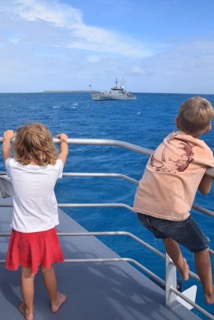   A windy ride to Home Island!   View from Home Island to Direction Island where the World ARC boats are anchored.   Yes we can acknowledge that Cocos Keeling is pretty flat!  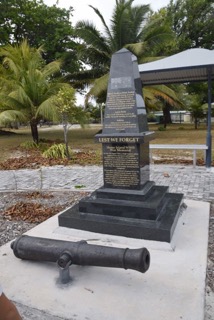  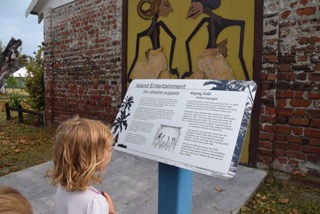 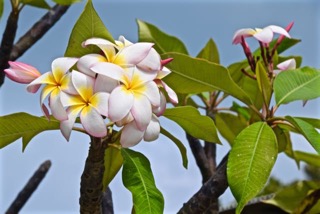 THE COPRA INDUSTRY ON COCOS For many years the islands were a powerhouse of copra production, with all resources and workers devoted to coconut growing and processing. Apart from disruptions caused by cyclone damage, the industry only ceased in 1987 but the abundant coconut palms throughout the Cocos still bear testament to the extent of the trade. The Copra Industry is now unfortunately shut down due to the fact that forces make people still think that coconut oil is fattening and not good for your health (?!) so several copra industries had to shut down, including this one on Cocos Keeling Island. Nowadays we know that coconut oil is very good for your health in many ways. Unfortunately this is not enough to reburst the industry again on the island. These are the remainings from the ovens and the boats used in those days.    The habitats on Home Island. 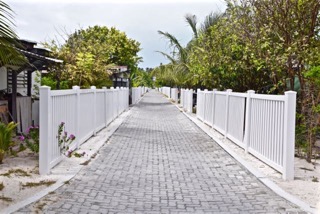 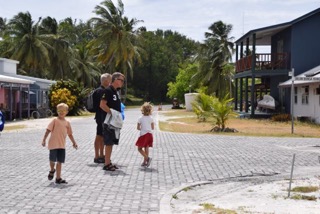   We walked to the other side of the island looking over Direction Island. Pretty windy! 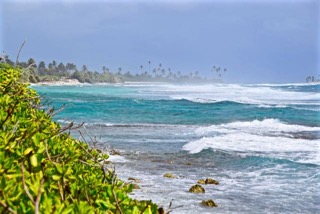    Inez found where to start surfing!  This compound are small barracks for the family to grow their fruits and vegetables.  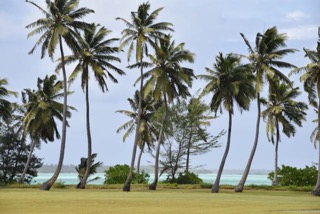 A beautiful walk along the coast of Home Island.     We came to “Oceania House” being a very interesting and important piece of history of Cocos Keeling Island. HISTORY OF THE FAMILY CLUNIES-ROSS The Clunies-Ross family were the original settlers of the Cocos. From 1827 to 1978, the family ruled the previously uninhabited islands as a private fiefdom, initially as terra nullus and then later under British (1857–1955) and Australian (1955–1978) sovereignty. The head of the family was usually recognised as the resident magistrate, and was sometimes styled as the "King of the Cocos Islands" – a title initially given by the press but later self-proclaimed. John Clunies-RossJohn Clunies-Ross was a merchant originating from the Shetland Islands. In 1813 he was at Timor as Third Mate and then became captain of the brig Olivia. Reportedly he first cruised the waters of the then uninhabited Cocos Keeling Islands in 1825. After surveying them he moved his family to live on one of the islands in 1827. He planted hundreds of coconut palms and brought in Malay workers to harvest the nuts, building a business by selling copra. According to a 1903 article in The Timaru Herald "Clunies-ross runs his little colony on model lines and succeeded beyond expectation" and Charles Darwin mentioned after his 1836 visit that he "found the natives in a state of freedom”. However the article left out the sentence that immediately followed :"but in most other points they are considered as slaves”. Ross traded with Dutch vessels going to Dutch ports on Java and Sumatra and became a naturalised Dutch subject. He had approached both the British and the Dutch government for annexation but neither had responded. John George Clunies-RossIn 1851, his son John George Clunies-Ross (Ross II) took over, and in 1857 British Captain Stephen Fremantle visited onboard Juno who "took possession of the islands in the name of the Britannic Majesty’s Government”. Freemantle appointed John George as superintendent of the islands and left after a 3-month vacation. The connection to Britain changed nothing in Ross' autonomous administration and it was not until fifteen years later another British ship arrived for a complete survey of the island. Apparently Fremantle annexed the islands by mistake, thinking he had arrived on the Coco Islands of the Andaman Islands.[2]:188 George Clunies-RossIn 1871, George Clunis-Ross (Ross III) became superintendent after his father had died. It was during his administration, in 1885, that the first annual inspection by a representative of the Straits Settlements Government occurred. In 1886 Queen Victoria granted the islands in perpetuity to the Clunies-Ross family. Representatives of the Government were sent to the island each year and reports reflected that "members of the Clunies-Ross family are today in every sense of the word proprietors of the islands, for Mr. George Clunies-Ross makes his own laws and interprets them, polices his little domain, provides his own coinage, controls the entire trade and acts as "the universal provider" to satisfy the wants of the community”. John Cecil Clunies-RossThe title to the islands was claimed by the Ross family until 1978, when John Cecil Clunies-Ross (Ross V) was forced to sell the islands to the Commonwealth of Australia for £2.5m ($4.75m). The Commonwealth had already been administering the islands since 1955 and threatened expropriation. As of 2007 John Cecil Clunies-Ross lived in Perth, Western Australia. John George Clunies-RossAs of 2007 John George Clunies-Ross born 1957 lives on West Island.  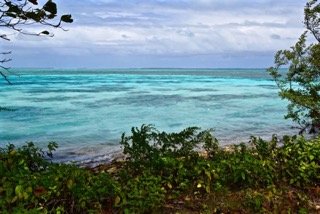 Alex and Inez having fun with Edwin from Zeeland.   We were welcomed by April, an Australian lady, who has now taken over the management of "Oceania House”, the Family Clunies-Ross residence and is totally devoted to this house and what can be done with it. She was charming to listen too! She told all about the amazing history of the family Clunies-Ross and how the copra industry has been passed for 5 generations from the 18th century until only recently.  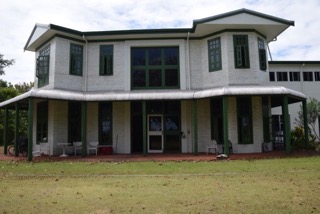 Oceania House is built with tiles from Höganäs! 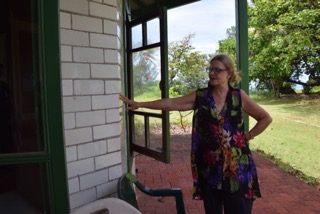 Entering the house was like entering right into history. It was an amazing feeling to walk in and feel the history in the walls. Haha if only walls could talk. Luckily there are amazing people like April who passionately passes on their history and the knowledge. Hopefully the history will be passed further on after April. On the shelf of the picture to the right is the first Clunies-Ross to start exploiting copra (coconut) on Cocos Keeling. He was also the one who built "Oceania House". It was amazing to experience this house as it would have been built in England, however it is built many many miles away from its European inspirators right in the middle of the Indian Ocean in the 18th century! Imagine all the furniture and interior being transported by ship all the way from Scotland to Cocos in those days. On this shelve is the Clunies-Ross ancestor. 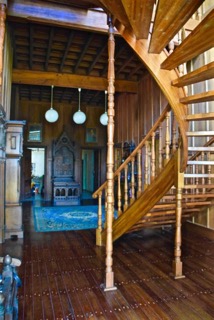   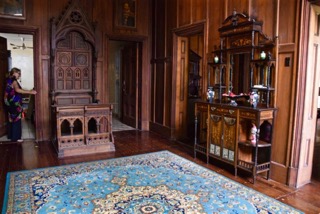 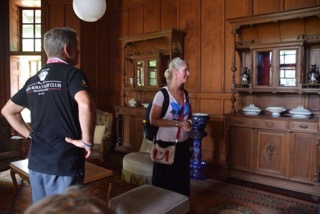      April’s passion together with her husband is to revive "Oceania House" into a guest house welcoming guests. Thanks to the World War II the airport on West Island is running with flights from Indonesia, Australia’s mainland as well as Christmas Island. We wish her good luck!  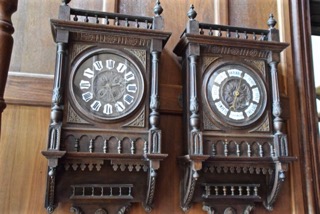 INTERACTION DIRECTION ISLAND WITH HOME ISLAND Throughout the cables station’s existence it was there that most of the Cocos population lived, in the settlement around the “Big House”. However appealing this centre of population must have been, interaction between the cable station’s staff on Direction Island and those living here on Home Island was strictly controlled. The men on Direction Island had to get permission form “The Governor” (Lunies-Ross) as is described by John Milne in his memoirs of his time here: “About once a quarter we received an invitation to a crab curry lunch from our boat boys. First we obtained permission from Clunies Ross then we’d sail across usually in the Dahpne, bearing gifts. The journey back took a long time as we had to tack the whole way….” Similarly, Home Island people were only allowed on Direction Island on designated visits to barter food for things like cigarettes and clothes. It is quite likely that the presence of "Home Island beauties” (attractive young Cocos Malay women, ascendants from Malaysian working people) was behind the regimentation of these visits, though personalities clearly played a part too. Things were a little easier for the Indian and Chinese station employees, a number of whom married local women. Curiously, Clunies-Ross would not permit these couples to stay on the islands. Somewhat ironically, Rose Lunies-Ross, widow of John Sydney, later married a cable statoin staff member! 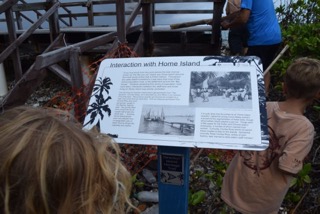 The presence of Islam in the Cocos islands is due to the population who were brought to Cocos and Christmas islands as labourers, of Malay and Indonesian origin. Roughly 80 percent of the inhabitants on the Cocos Keeling Islands are Sunni Muslims. The population on the two inhabited islands generally is split between the ethnic Europeans on West Island (est. pop. 120) and the ethnic Malays on Home Island (est. pop. 500). The islands main Muslim organisation is the Islamic Council of Cocos Keeling Islands. The Islands have three mosques, the most recent of which located on West Island. We finished our tour with lunch in the Muslim community.   Alex and Inez found new friends playing with water balloons.   Taking the ferry back we enjoyed more of the beautiful scenery. 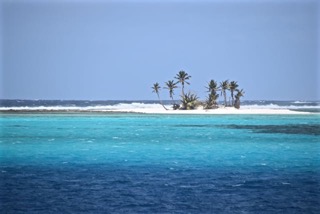  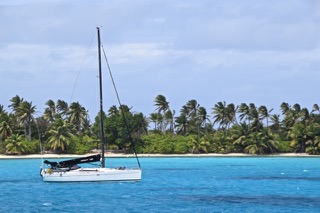  We finished our lovely day with a nice movie evening. 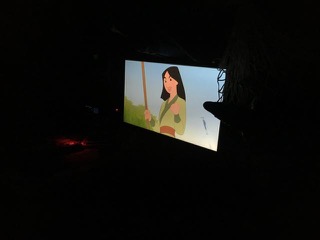  |